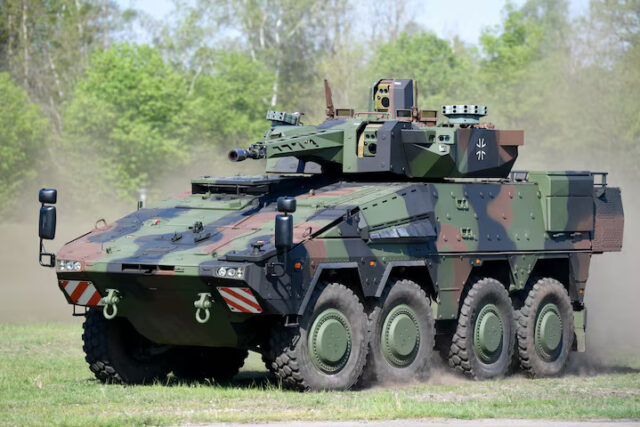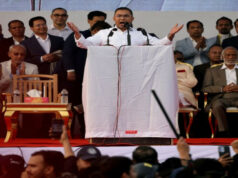
Germany is gearing up to place a series of multi-billion-euro defence orders, including 20 Eurofighter jets, up to 3,000 Boxer armoured vehicles, and around 3,500 Patria infantry fighting vehicles, two sources familiar with the matter told Reuters.
The purchases are part of Chancellor Friedrich Merz’s push to build Europe’s most powerful conventional army, aiming to reduce reliance on an increasingly unpredictable ally, the United States, and take greater responsibility for European security.
Earlier this year, Merz secured the parliamentary backing needed to exempt defence spending from Germany’s constitutionally enshrined debt limits, enabling his government to finance the military overhaul.
4X Budget Rise
Germany’s regular defence budget is projected to rise to around 83 billion euro ($95.8 billion) in 2026, up by 20 billion from 2025.
The Eurofighter order alone is expected to cost between 4 billion and 5 billion euro, the sources said, while the Boxer vehicles — built by KNDS and Rheinmetall — are estimated at 10 billion euro. The Patria vehicles are seen costing roughly 7 billion euro.
Deliveries of the Boxer and Patria platforms are expected over the next 10 years, according to the sources.
The defence ministry is also advancing plans to purchase more IRIS-T air defence systems and several hundred SkyRanger drone defence platforms, the sources said, noting that financial details for those acquisitions have yet to be finalised.
Bloomberg also reported on the procurement plans, though citing some differing figures.
The defence ministry did not immediately reply to a request for comment.
Meeting NATO’S Benchmark
Merz has pledged to meet NATO’s new benchmark of spending 3.5% of GDP on defence by 2029 – well ahead of most alliance members.
But Germany also has more catching up to do. Hours after Russia’s invasion of Ukraine, the chief of the German army publicly vented his frustration over the long-running neglect of military readiness in his country, saying the Bundeswehr was “standing there more or less empty-handed”.
($1 = 0.8661 euros)
(With inputs from Reuters)




